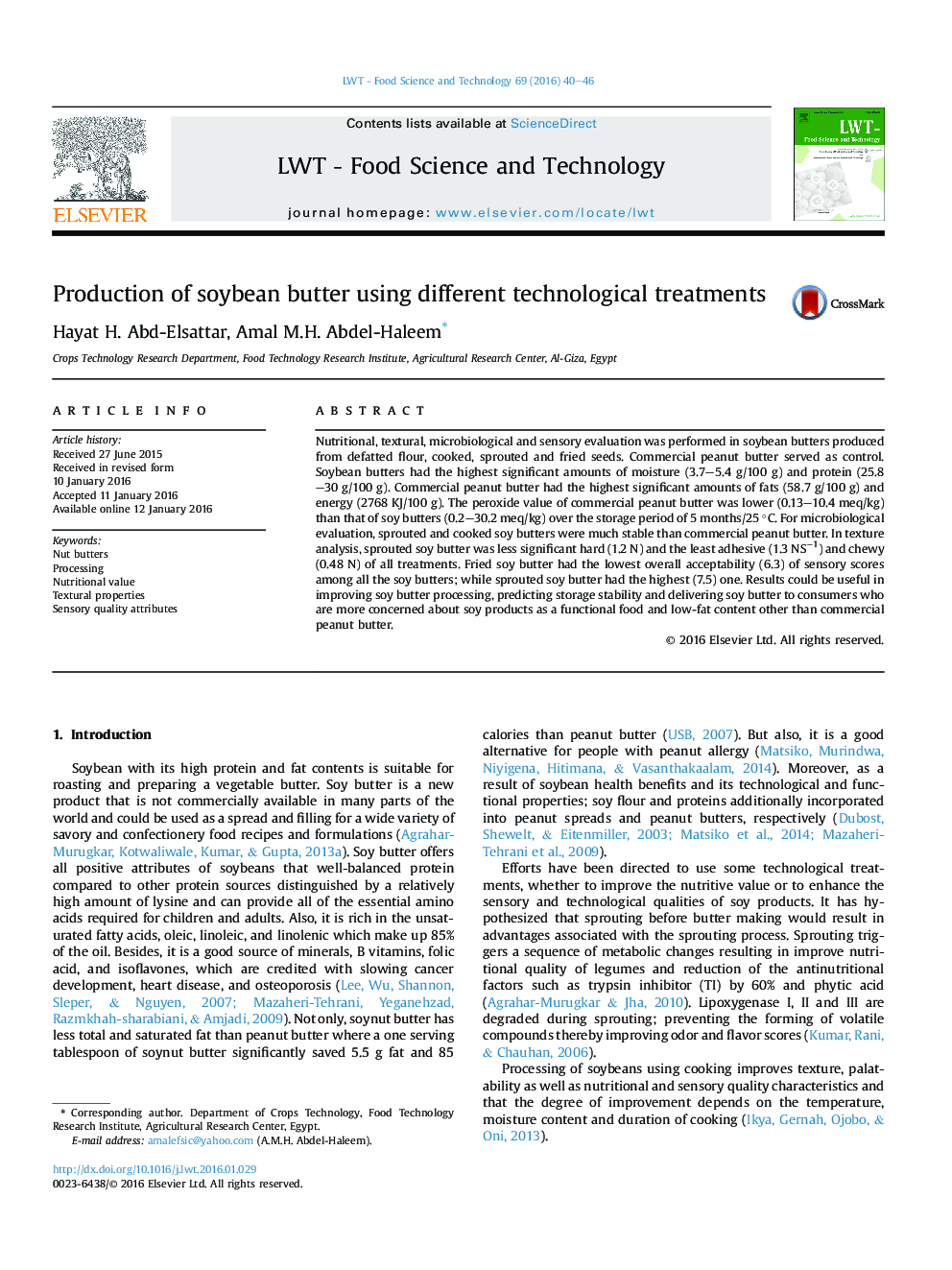| Article ID | Journal | Published Year | Pages | File Type |
|---|---|---|---|---|
| 4563715 | LWT - Food Science and Technology | 2016 | 7 Pages |
•Soy butters offer a significant nutritive value.•Defatted, sprouting, cooking, and frying treatments influenced soy butter quality.•Sprouting and cooking can be useful for improving soy butter processing.
Nutritional, textural, microbiological and sensory evaluation was performed in soybean butters produced from defatted flour, cooked, sprouted and fried seeds. Commercial peanut butter served as control. Soybean butters had the highest significant amounts of moisture (3.7–5.4 g/100 g) and protein (25.8–30 g/100 g). Commercial peanut butter had the highest significant amounts of fats (58.7 g/100 g) and energy (2768 KJ/100 g). The peroxide value of commercial peanut butter was lower (0.13–10.4 meq/kg) than that of soy butters (0.2–30.2 meq/kg) over the storage period of 5 months/25 °C. For microbiological evaluation, sprouted and cooked soy butters were much stable than commercial peanut butter. In texture analysis, sprouted soy butter was less significant hard (1.2 N) and the least adhesive (1.3 NS−1) and chewy (0.48 N) of all treatments. Fried soy butter had the lowest overall acceptability (6.3) of sensory scores among all the soy butters; while sprouted soy butter had the highest (7.5) one. Results could be useful in improving soy butter processing, predicting storage stability and delivering soy butter to consumers who are more concerned about soy products as a functional food and low-fat content other than commercial peanut butter.
